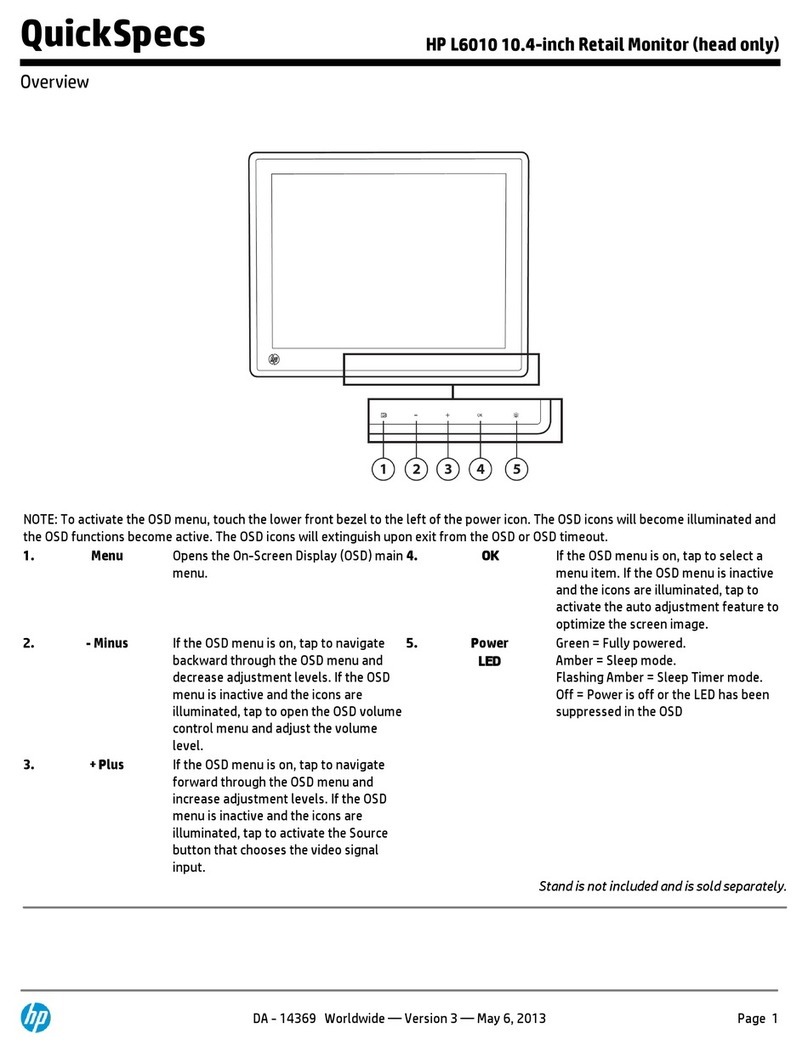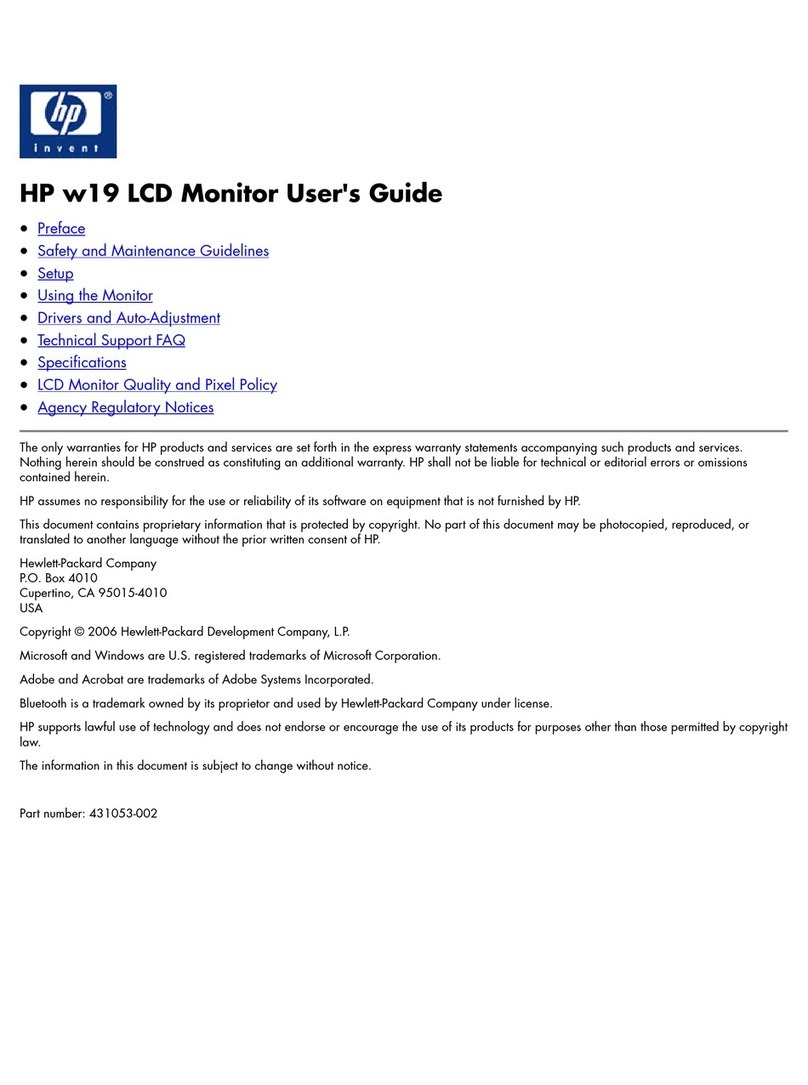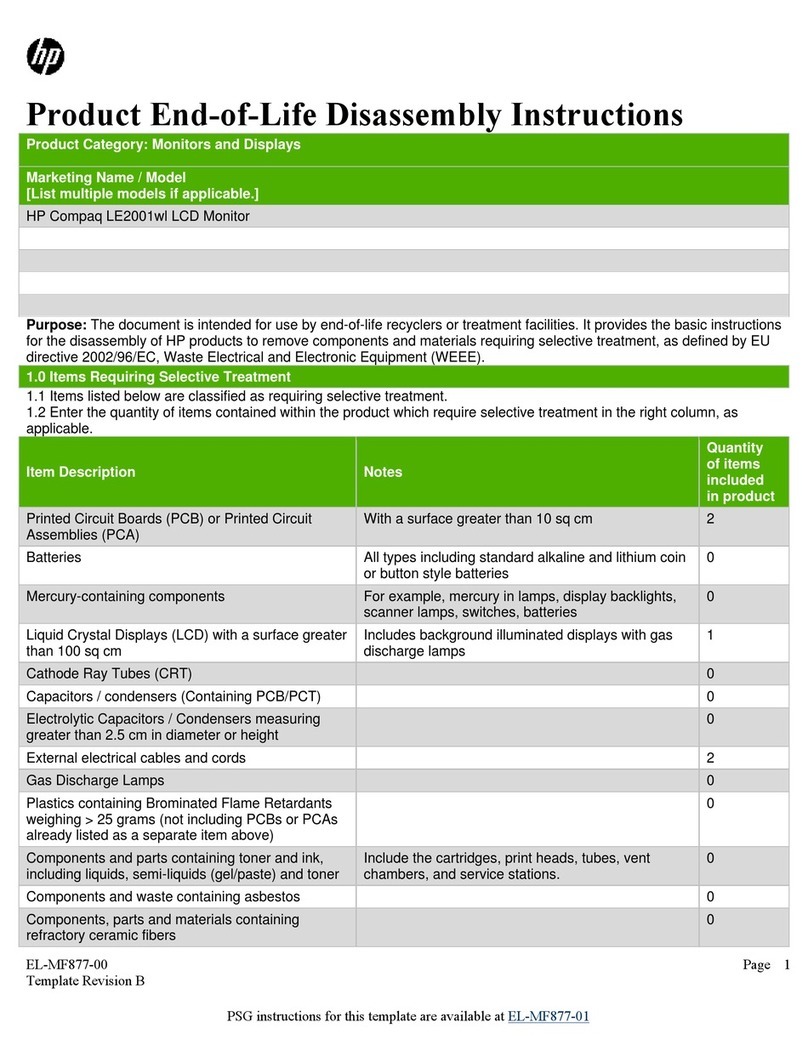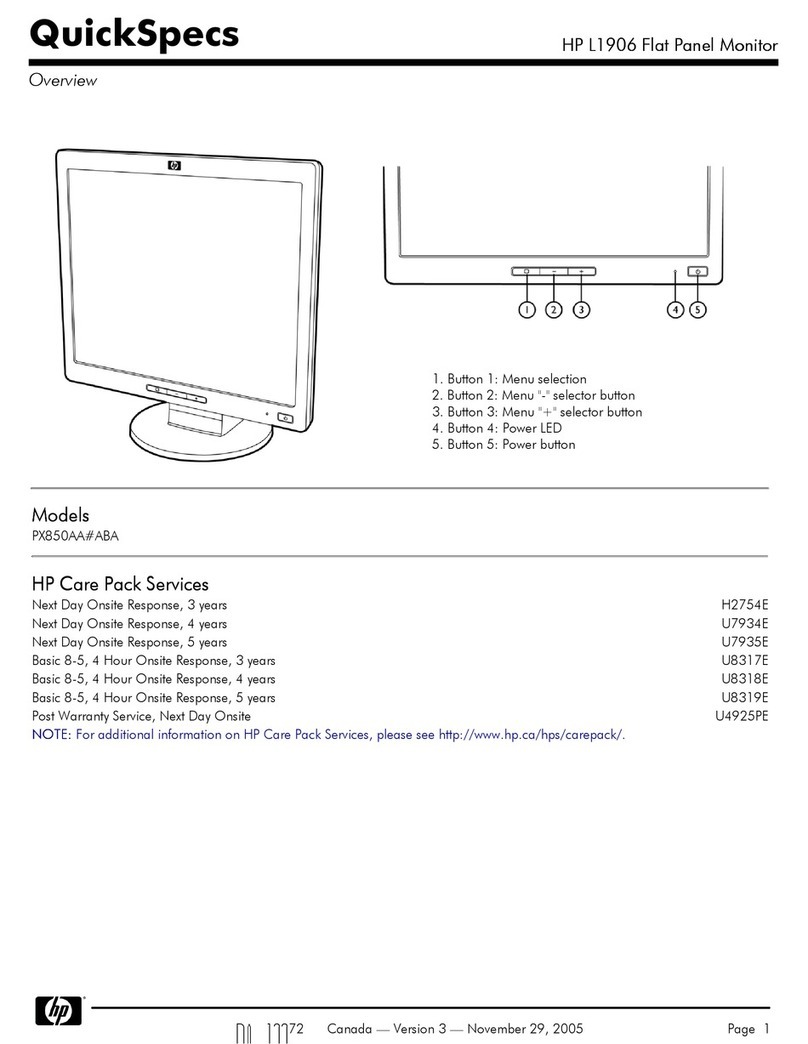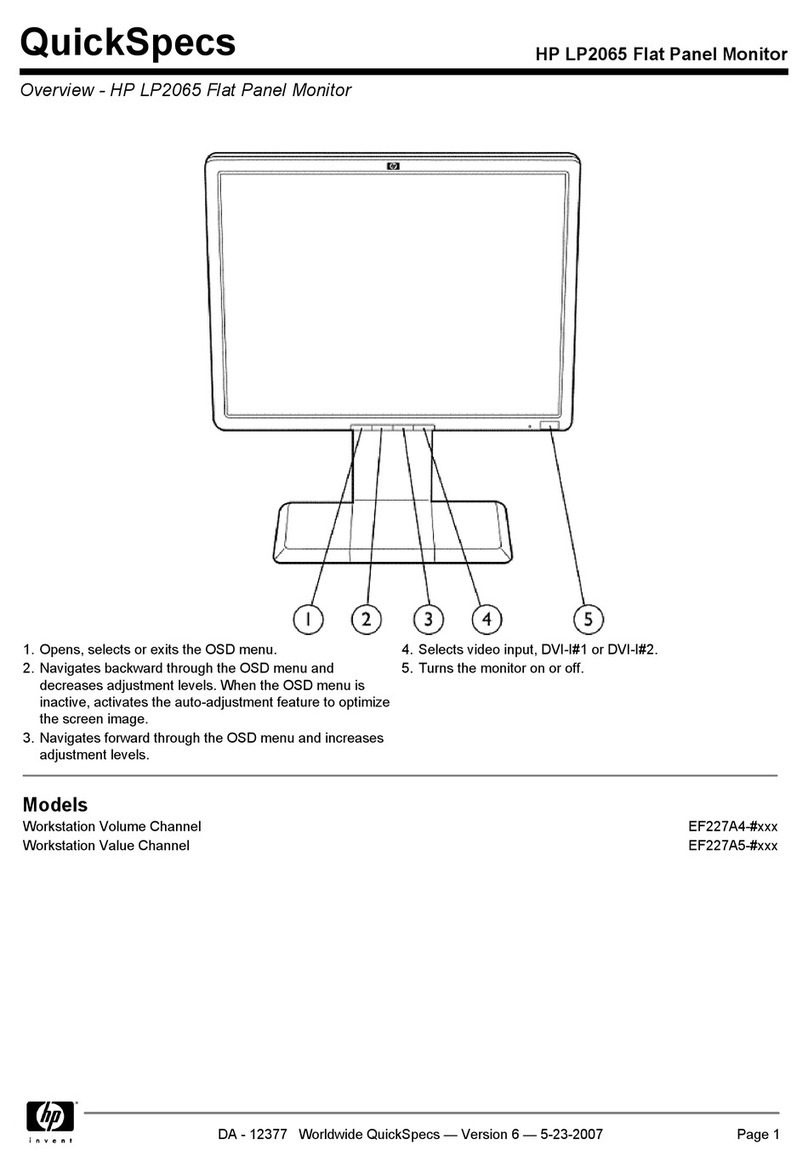
Model 1332A GeneralInformation
SECTION
I
GENERAL INFORMATION
1-2. The Hewlett-Packard Model 1332A is a cathode-
ray tube display that is capable of meeting a wide
variety of OEM medical and electronic instrument dis-
play needs. Thecathode-raytubehastheresolution and
picture quality required for medical diagnostic systems
plus an extremely bright display required for differ-
entiating between many gray shades.
1-3. This manual contains installation and operating
instructions, as well as maintenance information for
the 1332A. Instrument specifications and procedures
for verifying proper operation areincluded. Procedures
are also included for adjusting the instrument to its
performance specifications. Schematic diagrams, the
theory of operation, and troubleshooting information
are provided for use in maintaining the instrument.
1-4. This section of the manual contains the per-
formance specifications for the 1332A, and a list of
options available. It also lists the accessories supplied
with the 1332Aandother accessories thatareavailable.
Instrument and manual identification information are
also included.
1-5. SPECIFICATIONS.
1-6. Table 1-1is a complete list of the 1332A critical
specifications that are controlled by tolerances. Table
1-2 contains general information that describes
operating characteristics of the 1332A.
1-7. Any change in the specifications due to'manu-
facturing, design, or traceability to the U.S. National
Bureau of Standards will be listed on a manual change
sheet included with this manual. The manual and
manualchangesheetsupersedeallpreviousinformation
concerning specifications of the 1332A.
1-8. ACCESSORIES SUPPLIED.
1-9. The following accessories are supplied with the
1332A:
One Blue Contrast Filter, HP Part No. 01332-
02706.
One 0.375A Fuse for 220/240-Vac operation, HP
Part No. 2110-0063.
One2.3m (7.5ft)linecord,HPPartNo. 8120-1538.
1-10. ACCESSORIES AVAILABLE.
1-11. The following accessories are available for the
1332A:
Model 10380A OEM Horizontal Frame Kit.
Model 10381A Rack Mount Hardware Kit for
Model 10380A.
Model 10382A Bench Hardware Kit for Model
10380A.
Model 10383A Rack Mount Adapter.
Model 10384ARack Mount Kit forTwo Displays.
Model 10385ARack Mount Kit forTwo Displays.
Model 10386A OEM Vertical Frame.
BNC Shorting Caps,
HP
Part No. 1250-0645.
Camera Model 197A Option 006.
Model 10488A Input Signal Cable.
1-13. Standard options are modifications installed on
HP instruments at the factory and are available on
request. Table 1-3lists available options for the 1332A.
For information on field-installable options, refer to
Application Note 199,"Small Screen Displays, Medical
Diagnostic System Application and Interfacing."
1-14. INSTRUMENT AND MANUAL IDENTI-
FICATION.
1-15. Instrument identification by serial number is
located on the rear panel. Hewlett-Packard uses a two-
sectionserialnumber consisting of four-digitprefix and
a five-digitsuffix separated by a letter designating the
country in which the instrument was manufactured.
(A
=
U.S.A; G
=
West Germany;
J
=
Japan;
U
=
United
Kingdom.)
1-16. This manual applies to instruments with a
serial number as shown on the title page. If changes
have been made in the instrument since this manual
was printed, a "Manual Changesr' supplement sup-
plied with the manual will define these changes. Be
sure to record these changes in your manual. Back-
dating information in Section VII adapts the manual
to instrument with serial numbers lower than that
shown on title page. Part Numbers for the manual
and the microfiche copy of the manual arealso shown
on the title page.
Scans by ArtekMedia © 2008
